On this page you will find information on the:
Bulltongue Cattail Cutgrass Daiseys Dewberries Giant Ragweed Louisiana Iris Maidencane Marsh Mallow Switch Cane
Bulltongue
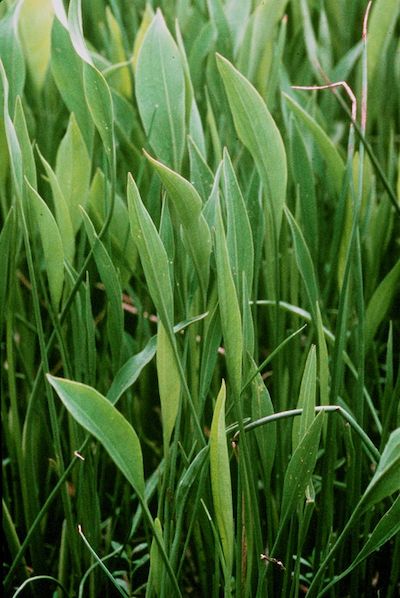
Common Name(s): Bulltongue, Bulltongue Arrowhead, Duck Potato
Scientific name: Sagittaria lancifolia
Type: Herb/Forb
Habitat: swamp/ditch
Predominantly on the East side of Greenway
Native
Perennial
An easily identifiable wetland plant is the Bulltongue (Sagittaria lancifolia), with its flat, flared upper leaf standing about two feet out of the water. They are also called Duck Potato because of the tuber, or “corm” they grow in the mud below which are eaten by ducks, geese, muskrats, nutria and humans.
Cattail
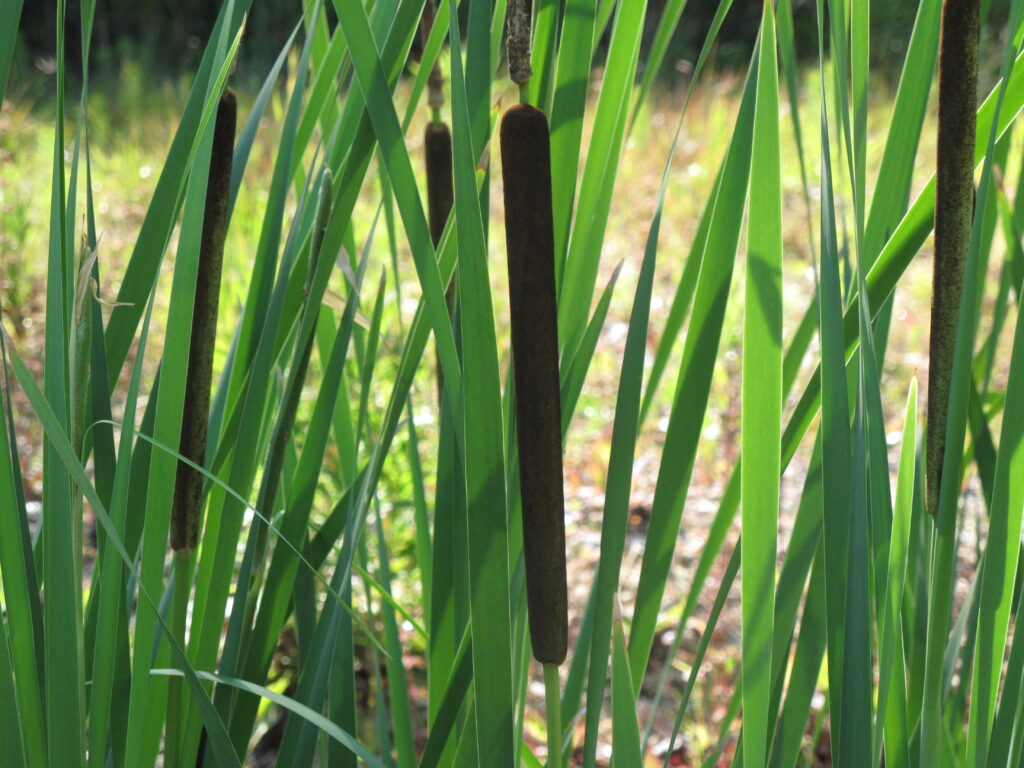
Common Name(s): Common Cattail
Scientific name: Typha latifolia
Type: Herb/Forb
Habitat: wet/innundated soils
Mostly in ditches on East side of Greenway
Native
Annual
The tall, graceful blades of Cattails in the ditches and wetlands on the Greenway contribute nicely to its summertime ensemble of plants. In late summer and early fall the plant develops distinctive, dark brown sausage-shaped seedpods. These are actually made of thousands of tightly packed flowers and tiny, almost invisible seeds. As the pod ripens it swells up and gradually disintegrates from the top down, giving off scads of fluffy stuff that does two things: 1.) it helps propagate the plant by wind distribution, 2.) it provides a way for impertinent children to thrash the plant about in busting up the pods.
The English call the plant a “bullrush.” Americans call it “corn dog grass,” probably because they’re reminded of a basic American foodstuff. They are also called “punks” because the stalk and seedpod can be soaked in oil or wax and lit afire.
The seedpods have other uses. Louisiana Muskrats and, oddly enough, Russian Cossacks from the Ukraine eat them. Birds line their nests with the fluff. Native Americans used it as kindling for starting fires, to line their moccasins and as a soft place to lay down their babes. The downy material can also be used to insulate clothing.
As beautiful as they make Louisiana’s wetlands, they are considered an obnoxious invader from the Great Lakes to the Everglades by hogging sunlight, displacing other native plants and laying down dense root mats.
Cutgrass
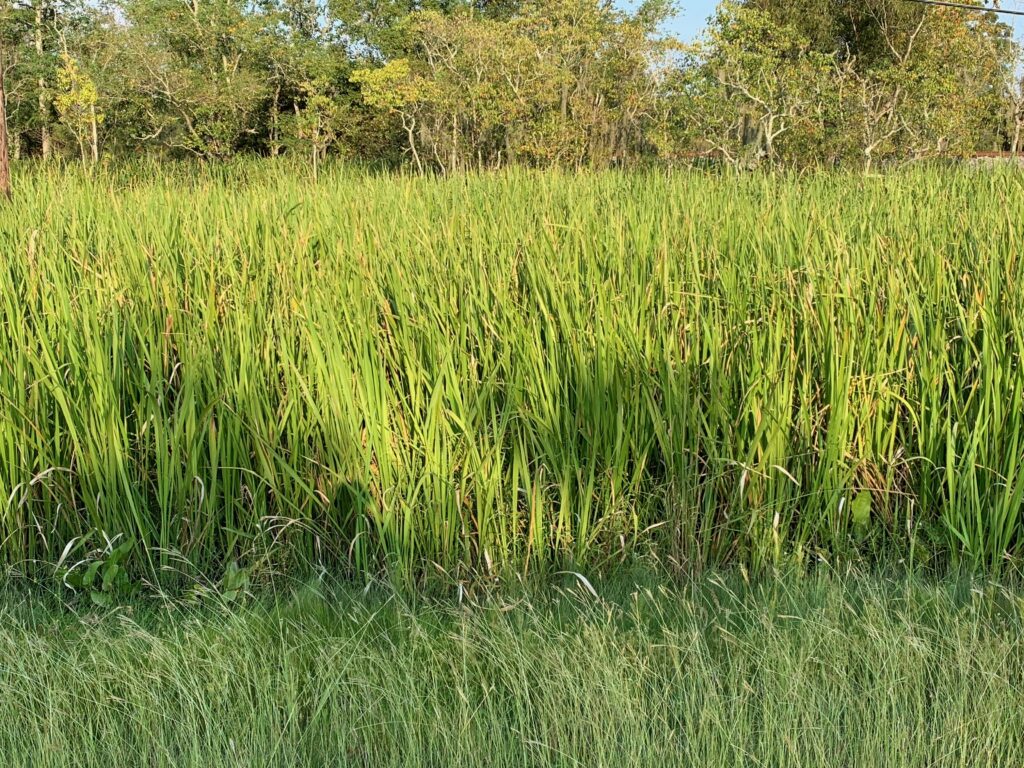
Common Name(s): Common Cattail
Scientific name: Typha latifolia
Type: Herb/Forb
Habitat: wet/innundated soils
Mostly in ditches on East side of Greenway
Native
Annual
The tall, graceful blades of Cattails in the ditches and wetlands on the Greenway contribute nicely to its summertime ensemble of plants. In late summer and early fall the plant develops distinctive, dark brown sausage-shaped seedpods. These are actually made of thousands of tightly packed flowers and tiny, almost invisible seeds. As the pod ripens it swells up and gradually disintegrates from the top down, giving off scads of fluffy stuff that does two things: 1.) it helps propagate the plant by wind distribution, 2.) it provides a way for impertinent children to thrash the plant about in busting up the pods.
The English call the plant a “bullrush.” Americans call it “corn dog grass,” probably because they’re reminded of a basic American foodstuff. They are also called “punks” because the stalk and seedpod can be soaked in oil or wax and lit afire.
The seedpods have other uses. Louisiana Muskrats and, oddly enough, Russian Cossacks from the Ukraine eat them. Birds line their nests with the fluff. Native Americans used it as kindling for starting fires, to line their moccasins and as a soft place to lay down their babes. The downy material can also be used to insulate clothing.
As beautiful as they make Louisiana’s wetlands, they are considered an obnoxious invader from the Great Lakes to the Everglades by hogging sunlight, displacing other native plants and laying down dense root mats.
Daiseys
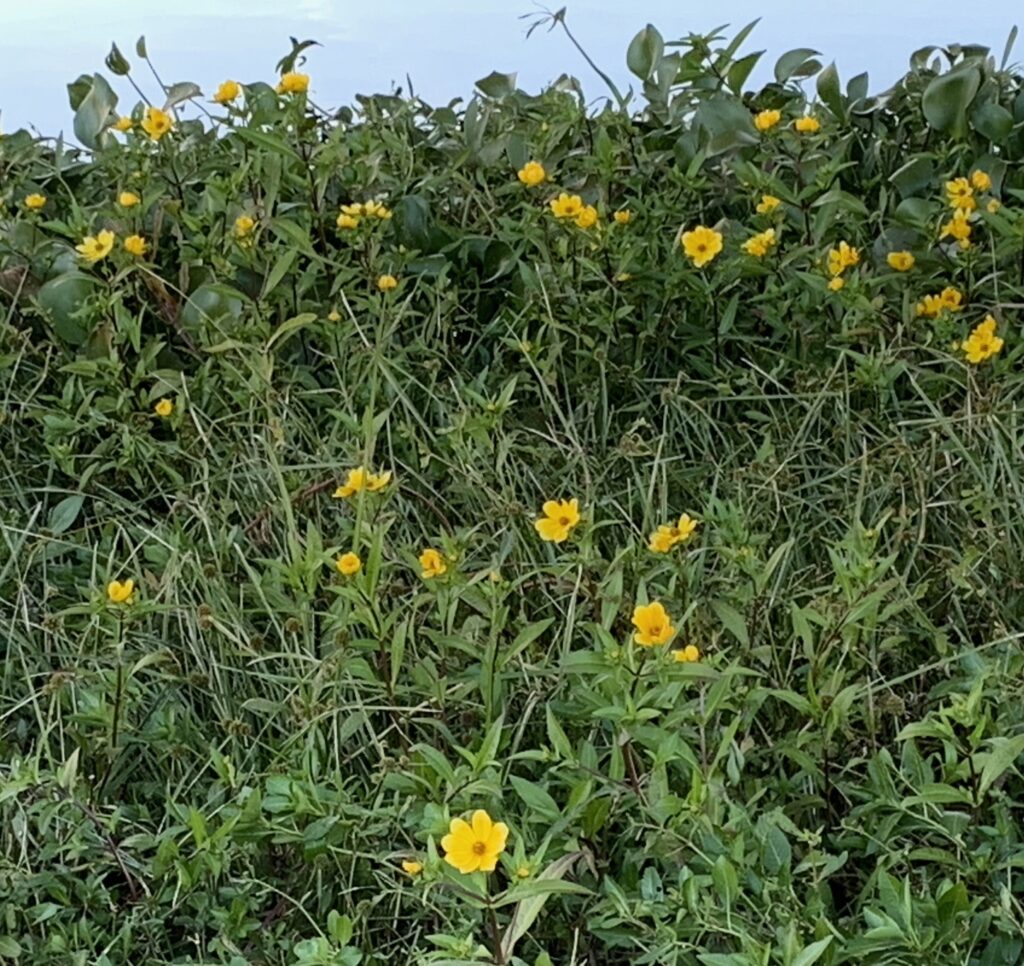
Common Name(s): Daisy, Larger Bur-marigold, Smooth Beggarticks.
Scientific name: Bidens laevis
Type: Herb/Forb
Habitat: swamp/ditch/undrained area
Predominantly on the West side of Greenway
Native
Annual
These line the I-55 Canal in late summer/fall and are only one representative of the large daisy family. They are native to South America, Mexico and the southern and eastern US and grow in wetlands and on riverbanks.
Dewberries
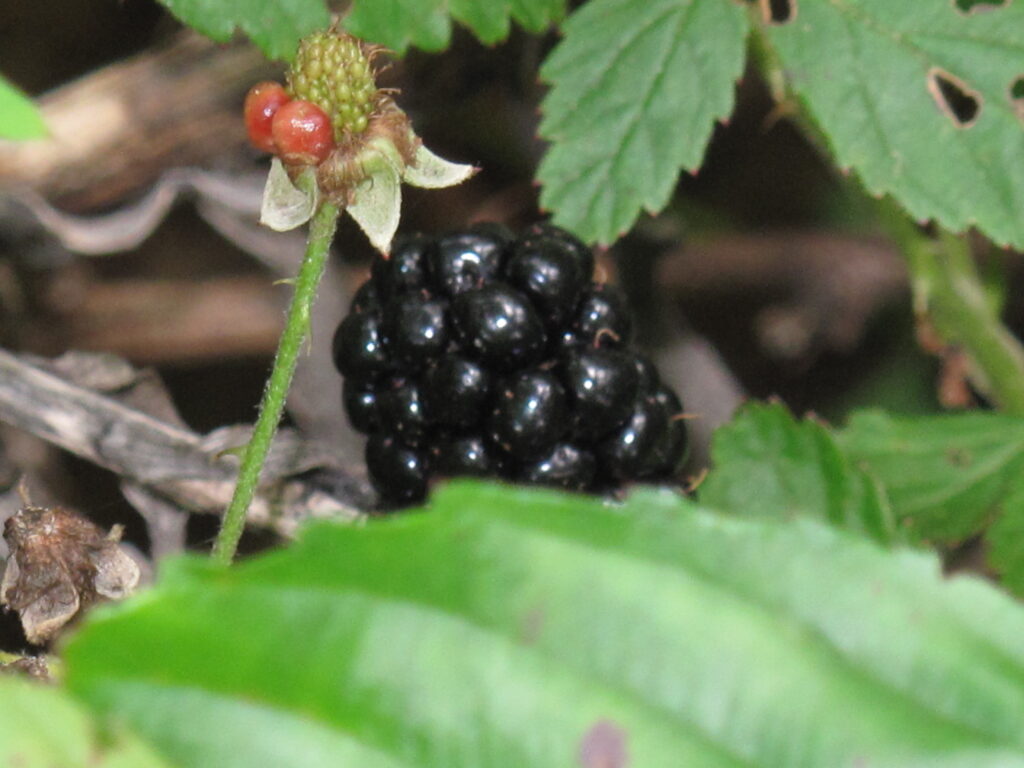
ommon Name: Dewberry
Scientific name: various species of Rubus
Type: Forb/Vine
Habitat: drained soils
Predominantly on East side of the Greenway
Native
Perennial
Dewberry plants grow close to the ground in sunny areas between woods and field. In the Spring they yield generous quantities of sweet, succulent berries that are guarded by small, plentiful thorns on their red stalks which, if you aren’t careful, will try to make you pay for coming in contact with them. They’re what the botanists insist are not “thorns” at all but something they blithely call “prickles.” Right. That is not the term that comes to mind when one encounters them.
The berries aren’t really berries at all but are what is known as an “aggregate fruit,” clusters of tasty, little, round “drupelets” that are ready to use for wine, jelly, tea or pies.
Giant Ragweed
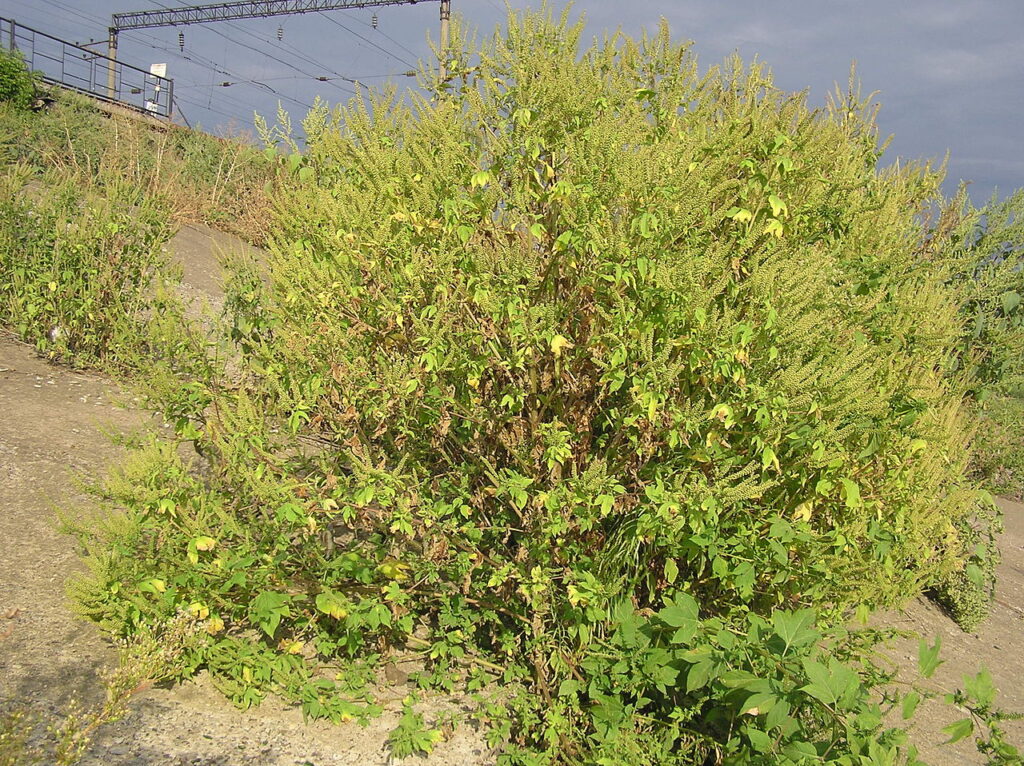
Common Name(s): Giant Ragweed
Scientific name: Ambrosia trifida
Type: Herb/Forb
Habitat: Slightly-drained to drained, highly organic soils
Prodominantly on the East side of Greenway
Native
Annual
Giant Ragweed emerges from the black, cakey, organic soils of south Louisiana to grow in great banks of tall, stiff, stalks that bristle with coarse, dark green, trident-shaped leaves.
The plant is a major tormentor to hay fever victims, using pollen grains that resemble tiny versions of the floating naval mines from WWII. It’s not hard to imagine that the term “rag-weed” is derived from the time people had to carry around handkerchiefs all day. Fortunately, modern over-the-counter pharmaceutical science and the tissue-paper industry have largely saved us from having to resort to using this obsolete, socially grotesque clothing accessory.
Louisiana Iris
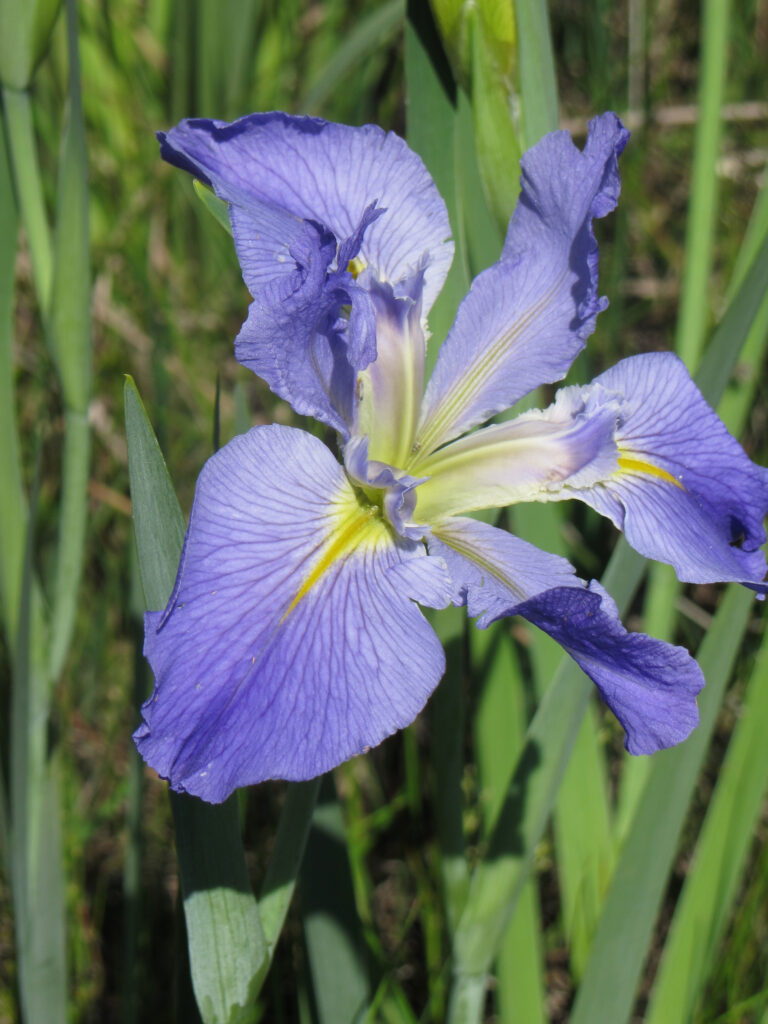
Common names: Louisiana Iris, Giant Blue Iris, Blue Flag
Scientific name: Iris giganticaerulea
Type: Forb/Herb
Habitat: wet soils
On both sides of the Greenway
Native
Perennial
The vivid blue Louisiana Iris sprouts from damp or wet soils at the edge of swamps, in boggy areas and roadside ditches across South Louisiana. Unfortunately, development and salt water intrusion have destroyed much of the habitat of this Official State Wildflower. For instance, there used to be fields of them waving at passersby on Chef Menteur Highway traveling to to the Mississippi Gulf Coast where there are now only suburbs and brackish marsh. The plant does not tend to reappear very easily once gone from an area. One reason is its seeds are toxic so they are typically not spread by animals. Also, the seeds don’t float very far away from the parent plants so they tend to only grow in local clusters.
The Greater New Orleans Louisiana Iris Society has plans to propagate them and even salvage them from areas that are to be destroyed by development. They will plant these in high visibility wetlands such as those along the Swampwalk Boardwalk in the Joyce Wildlife Management Area on the Greenway. The hope is that these clusters of transplants will fulfill the plant’s potential of doubling in size each year by spreading their rhizomes and seeds and return them to their former prominence in the Louisiana landscape.
Maidencane
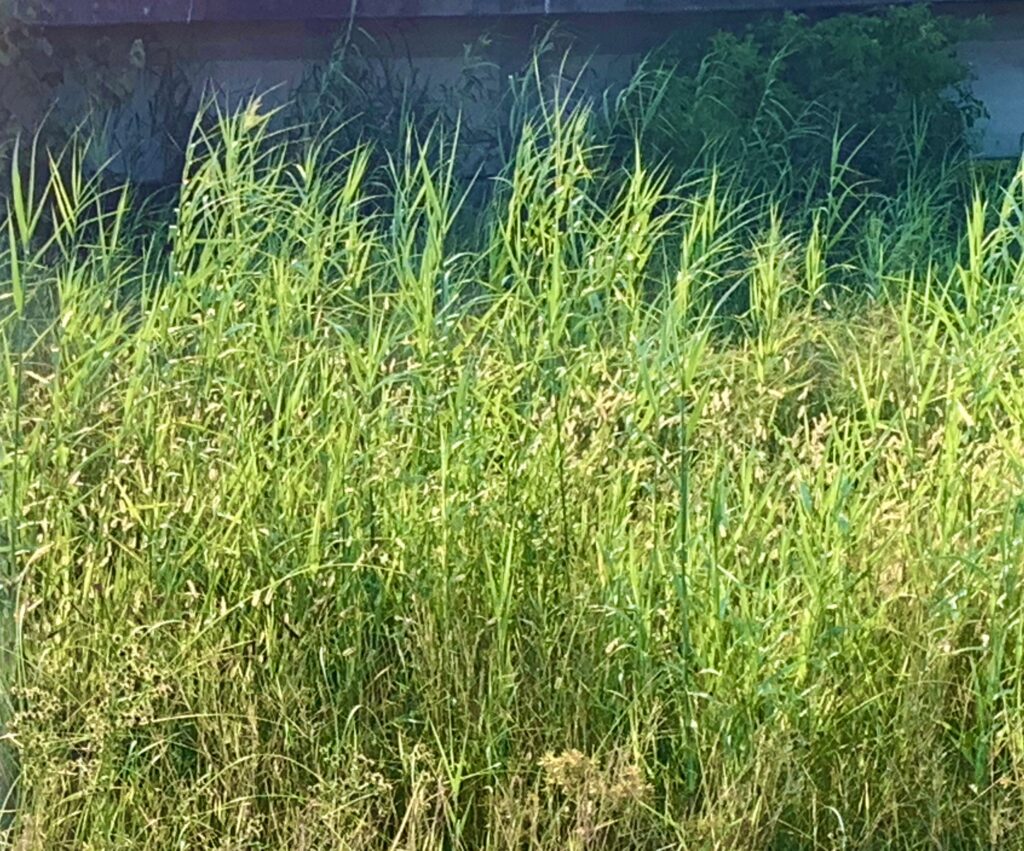
Common Name: Maidencane
Scientific name: (Panicum hemitomon)
Type: Herb/Forb/Grass
Habitat: roadside
On East and west side of Greenway
Native
Annual
This grass, a brief sort of bamboo, grows here and there on the sides of the Greenway. It is similar in appearance to Switch Cane but is smaller and shorter (think, “lady-like”) and its leaves tend to point upwards while the Switch Cane’s leaves droop downward.
Marsh Mallow
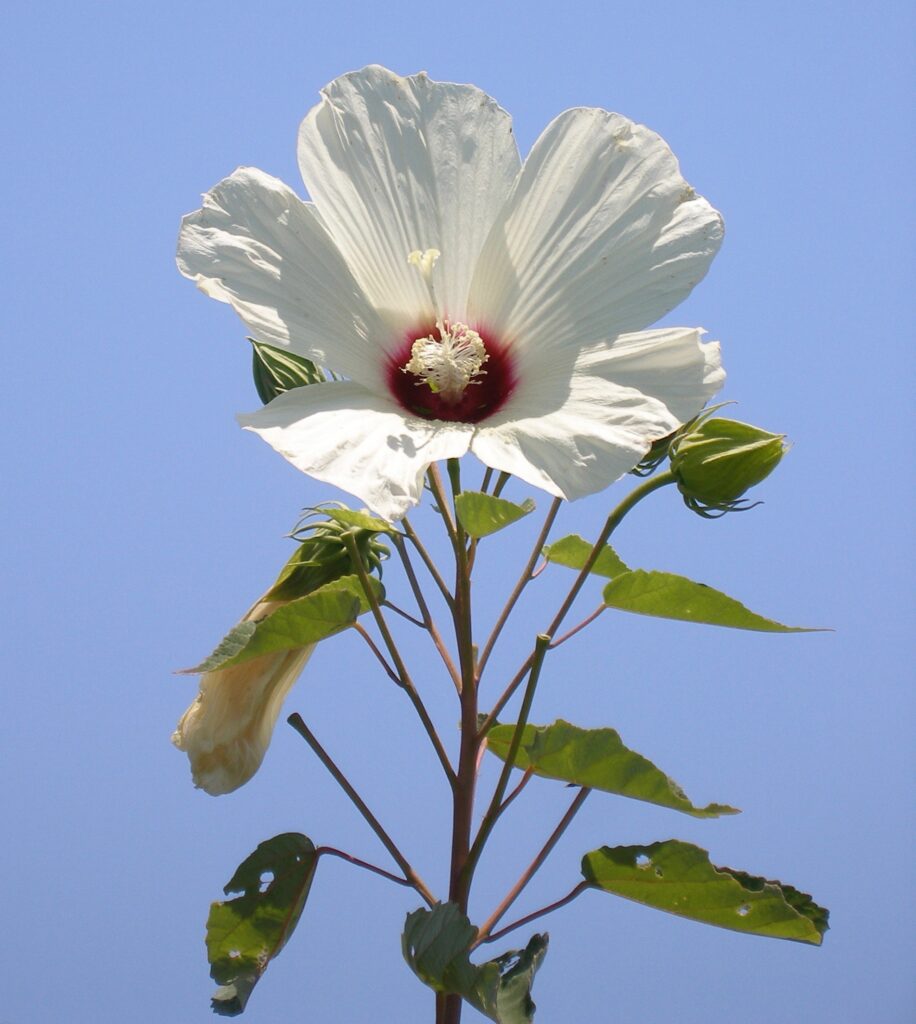
Common Name: Marsh-mallow
Scientific name: Althaea officinalis
Type: Forb/Herb
Habitat: damp soils
Predominantly on the east side of the Greenway
Non-native (Europe, Western Asia, and North Africa)
Perennial
The conspicuous white and pink blossoms of the Marsh Mallows appears in great numbers on the Greenway in August-September before going to seed and falling over. Its an Old World plant used in herbal medicines and as an outright foodstuff (boiled first then fried in butter with onions). And yes, the root’s extract was once used as a sweetener for puffed gelatin snacks and cough medicines.
Switch Cane
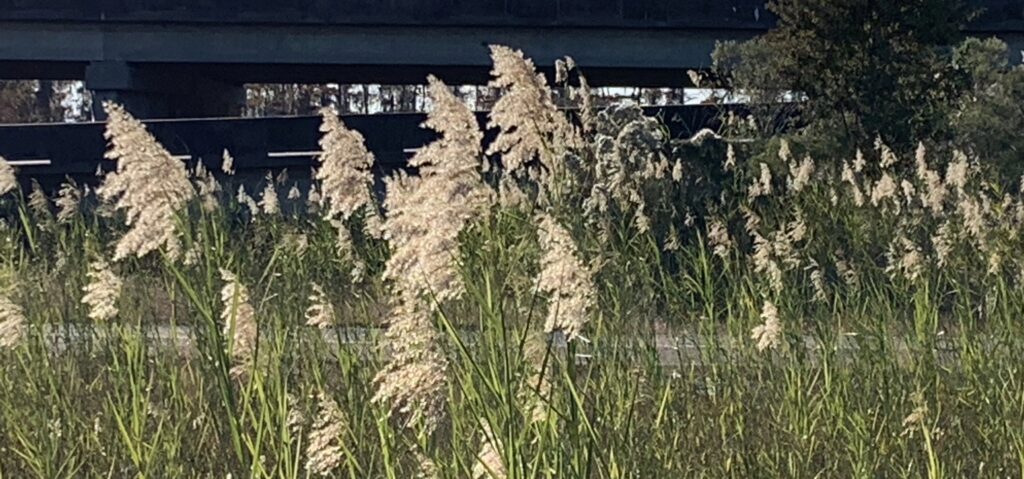
Common Name: Switch Cane
Scientific name: Arundinaria appalachiana
Type: Grass/Forb/Herb
Habitat: damp soils
Predominantly on the east side of the Greenway
Non-native (Europe, Western Asia, and North Africa)
Perennial
This slender bamboo grows on tapered stalks 2-13 ft. tall from drained soils around the margins of marshes. Whether it was actually used as a switch for administering corporal punishment is unknown, however, sometimes one has to use what is handy
Roseau Cane
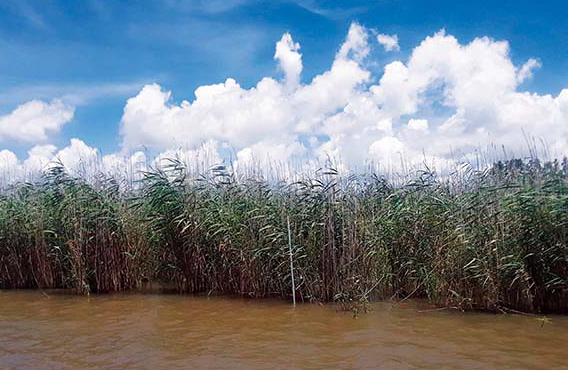
Common Name(s): Roseau Cane
Scientific name: Phragmites australis
Type: Herb/Forb
Habitat: wet/innundated soils
Both sides of the Greenway
Native
Perenial
The “Delta” variety of this tall marsh plant is the most prevalent of this type of grass/cane in Louisiana and it truly dominates the vast watery landscape at end of the Mississippi River. Long avenues of it line the myriad pathways draining the river through its outlet to the sea. This grass is also found across the coastal zone of Southeast Louisiana, including along the shores of our local lakes. Stands of it decorate the shore of Lake Maurepas at Sunset Park on the Greenway.
Alarmingly, large areas of Roseau cane have recently been inflicted with an insect parasite called the Mealy Bug that kills the plant. Thousands of acres are turning brown and the plant’s disappearance threatens the fragile delta soils that its root systems hold together, greatly exacerbating an already critical coastal erosion problem.
